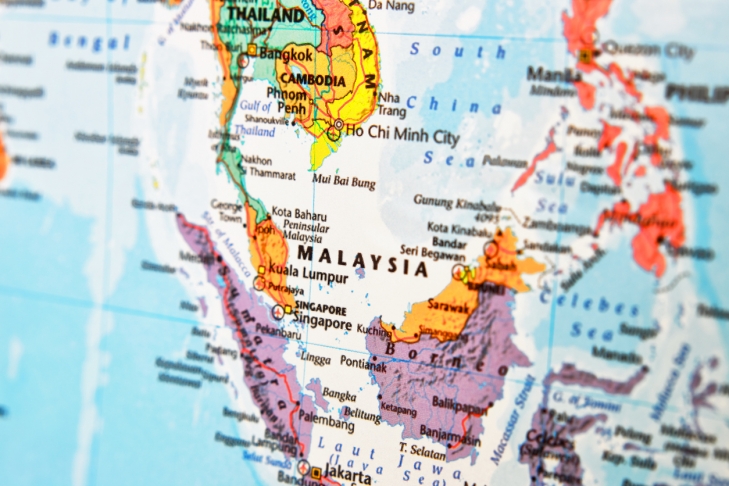
As China muscles in on the South China Sea, Singapore adjusts to relations with Malaysia and Indonesia
10 March 1965 stands as a landmark date in relations between Southeast Asian neighbours Singapore, Malaysia, and Indonesia. Two Indonesians marines had set off a bomb at Macdonald House on Orchard Road in Singapore, killing three and injuring thirty-three.
Singapore, then part of Malaysia, was caught in the crossfire of the Konfrontasi between Indonesia and Malaysia. Southeast Asia’s biggest country opposed the formation of Malaysia, which involved the federation of Singapore and, on the northern part of the Indonesian island of Kalimantan, Sabah and Sarawak in September 1963.
While Indonesia and Malaysia terminated diplomatic relations as a result, Singapore was subsequently booted out of Malaysia in 1965. The two Indonesian soldiers were convicted and hanged in 1968 despite clemency pleas the year before from new Indonesian president Suharto. The Singapore Embassy in Jakarta was ransacked by angry mobs on the day of the executions.
Since then, relations have warmed – not without inevitable occasional episodes of tension – in the region. Bilateral relations between all three countries have improved, and multilateral initiatives such as the Association of Southeast Asian Nations (ASEAN) have heralded a period of relative peace.
All (Silk) roads lead to China
The rise of China is posing a challenge to decades of managed stability. PowerChina International, a Chinese state-owned energy company, is part of a joint-venture to develop a deep sea port in Malacca. Due to be completed in 2019, it is part of the Melaka Gateway project slated to be completed in 2025 that could divert significant sea traffic from Singapore.
China is also driving the East Coast Rail Line (ECRL) project connecting Port Klang on the west coast of peninsula Malaysia to the Kuantan Port on the east coast. Chinese firm Guangxi Beibu International owns 40 percent of Kuantan Port, which when completed in 2018 would be the entry to a land bridge from the disputed South China Sea to the Strait of Malacca, once again bypassing Singapore.
“Singapore’s early reaction is one of a relaxed one: there’s enough shipping to go around,” remarks Khong Yuen Foong, Li Ka Shing Professor of Political Science at the Lee Kuan Yew School of Public Policy at the National University of Singapore. “But in the long run, if relations between China and Singapore deteriorate, one can imagine China steering Chinese companies towards the Malaysian land bridge (instead of calling at Singapore). It’s a carrot or stick that China will be able to use.
“Although it is a Singapore-China issue, Malaysia would be implicated. Questions about, ‘Why is Malaysia conniving with China to take away part of Singapore’s lunch?’ will arise, which cannot be good for relations.”
In addition to China’s effort to build up its maritime Silk Road influence, the first container trains arrived earlier this month in Britain 17 day after setting off from China. 68 containers were reported to have taken off from Yiwu in eastern China, much less than the 2,000 to 3,000 that smaller container ships carry.
“If you go the traditional route, passing through the Singapore and India to Europe, it would take 40 days,” points out Han Fook Kwang, Senior Fellow at the S Rajaratnam School of International Studies at the Nanyang Technological University in Singapore. “It takes a longer time but it’s cheaper. By train it costs more but it’s faster. Technology might change and the costs of the train trip might come down, in which case Singapore’s viability as this great big shipping hub will be threatened.
“I feel strongly that, in the case of Singapore, Singapore’s economic influence is of paramount importance. Our relationship with many of the countries in the region, be it Malaysia or Indonesia, is shaped in a significant degree by economic ties and our relevance to the world.
“If we are unable to continue to be relevant because of all these changes in the region and the world, I think it would affect both Singapore’s security and our relationship with these other countries.”
A new world order
In a 2013 article titled “The American Tributary System”, Khong argued that the United States had been instituting “the most successful tributary system the world has ever seen”. America, Khong asserts, sought two things: to be recognised as the hegemon, and that others emulate its political ideas. Since 1945, and especially after the fall of the Soviet Union in 1991, the U.S. has been successful in those goals for the most part.
Khong asserts that America had been doing what critics fear China might soon revive, harking back to olden times when Chinese emperors demanded tribute from states in the ‘Chinese Lake’ that is the South China Sea.
“Because China has replaced the U.S. as the number one trading partner for virtually everyone in Asia, China can use it as part of their statecraft [in getting] states to align with it over time,” Khong elaborates. “If the Trump administration is indeed going to be less engaged in Asia, it is an opportunity for China to muscle in.
“Even if Trump had not won, states in Asia can no longer say, ‘We don’t want to choose between the U.S. and China.’ Half of ASEAN have already chosen, and those that have not are hedging. It will affect a lot of things depending on how you choose.”
Khong Yuen Foong and Han Fook Kwang were panelists at the SMU-SOSS IAS Workshop: Managing Relations with Indonesia and Malaysia: A Panel Discussion in Honour of SR Nathan held on January 18,2017.
Follow us on Twitter (@sgsmuperspectiv) or like us on Facebook (https://www.facebook.com/PerspectivesAtSMU)
Last updated on 27 Oct 2017 .